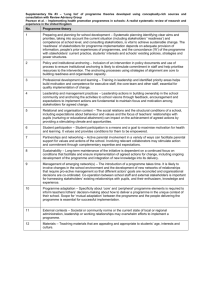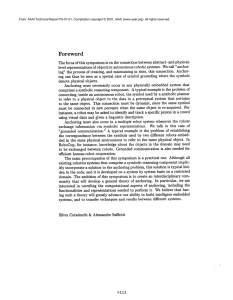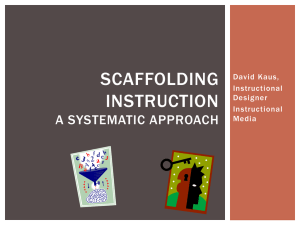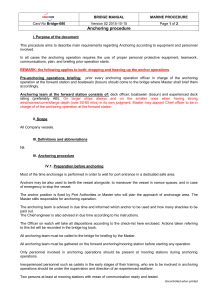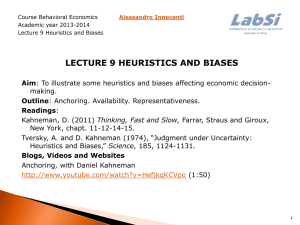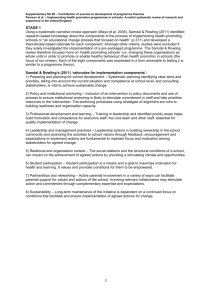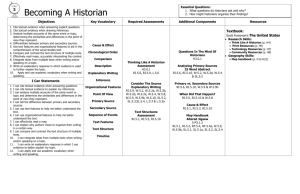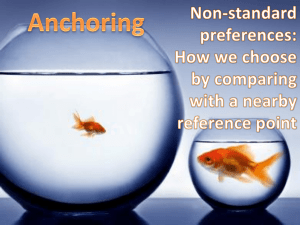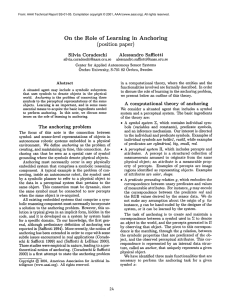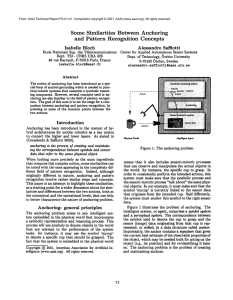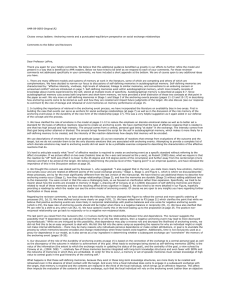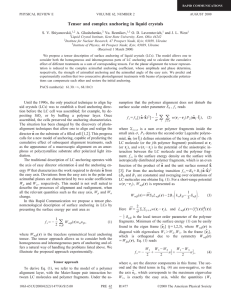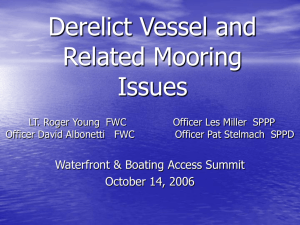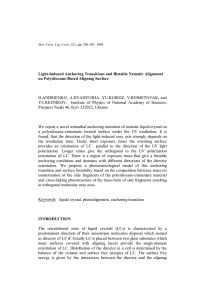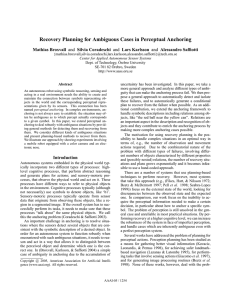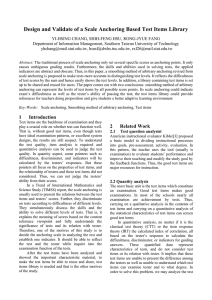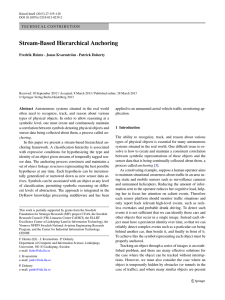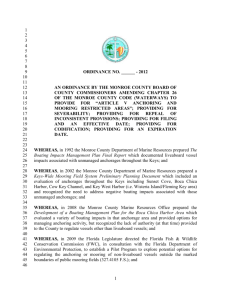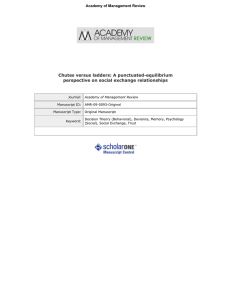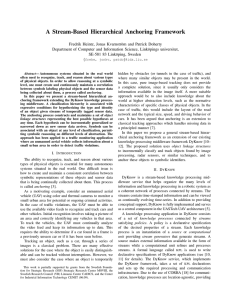Supporting on-going changes in students` thinking—the tool
advertisement
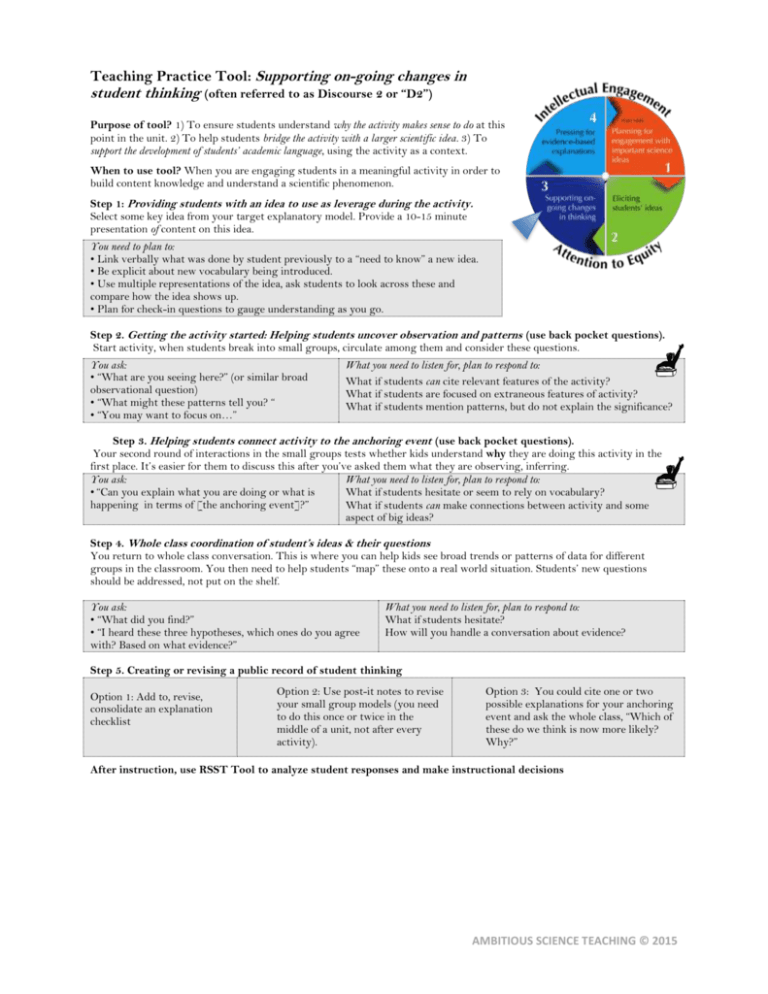
Teaching Practice Tool: Supporting on-going changes in student thinking (often referred to as Discourse 2 or “D2”) Purpose of tool? 1) To ensure students understand why the activity makes sense to do at this point in the unit. 2) To help students bridge the activity with a larger scientific idea. 3) To support the development of students’ academic language, using the activity as a context. When to use tool? When you are engaging students in a meaningful activity in order to build content knowledge and understand a scientific phenomenon. Step 1: Providing students with an idea to use as leverage during the activity. Select some key idea from your target explanatory model. Provide a 10-15 minute presentation of content on this idea. You need to plan to: • Link verbally what was done by student previously to a “need to know” a new idea. • Be explicit about new vocabulary being introduced. • Use multiple representations of the idea, ask students to look across these and compare how the idea shows up. • Plan for check-in questions to gauge understanding as you go. Step 2. Getting the activity started: Helping students uncover observation and patterns (use back pocket questions). Start activity, when students break into small groups, circulate among them and consider these questions. You ask: • “What are you seeing here?” (or similar broad observational question) • “What might these patterns tell you? “ • “You may want to focus on…” What you need to listen for, plan to respond to: What if students can cite relevant features of the activity? What if students are focused on extraneous features of activity? What if students mention patterns, but do not explain the significance? Step 3. Helping students connect activity to the anchoring event (use back pocket questions). Your second round of interactions in the small groups tests whether kids understand why they are doing this activity in the first place. It’s easier for them to discuss this after you’ve asked them what they are observing, inferring. You ask: What you need to listen for, plan to respond to: • “Can you explain what you are doing or what is What if students hesitate or seem to rely on vocabulary? happening in terms of [the anchoring event]?” What if students can make connections between activity and some aspect of big ideas? Step 4. Whole class coordination of student’s ideas & their questions You return to whole class conversation. This is where you can help kids see broad trends or patterns of data for different groups in the classroom. You then need to help students “map” these onto a real world situation. Students’ new questions should be addressed, not put on the shelf. You ask: • “What did you find?” • “I heard these three hypotheses, which ones do you agree with? Based on what evidence?” What you need to listen for, plan to respond to: What if students hesitate? How will you handle a conversation about evidence? Step 5. Creating or revising a public record of student thinking Option 1: Add to, revise, consolidate an explanation checklist Option 2: Use post-it notes to revise your small group models (you need to do this once or twice in the middle of a unit, not after every activity). Option 3: You could cite one or two possible explanations for your anchoring event and ask the whole class, “Which of these do we think is now more likely? Why?” After instruction, use RSST Tool to analyze student responses and make instructional decisions AMBITIOUS SCIENCE TEACHING © 2015 Pre-record specific questions for each step of the practice Generic questions for each step Step 1. Providing students with an idea to use as leverage during the activity Questions you will pose + discourse strategies (i.e. follow-up prompts, turn and talk, getting students to talk to one another) [What representations are you using? What are the check-in questions you are planning?] What to listen for and plan to respond to Complete this after you teach What questions did you ask? What discourse strategies did you use? What will you do if students don’t respond well to your check-in questions? Step 2. Getting the activity started: Helping students uncover observation, patterns. • “What are you seeing here?” • “What might these patterns tell you? “ • “You may want to focus on…” What if students can cite relevant features of the activity? What if students are focused on extraneous features of activity? What if students mention patterns, but do not explain the significance? Step 3. Helping students connect activity to the anchoring event (use back pocket questions). • “Can you explain what you are doing or what is happening in terms of [the anchoring event]?” Step 4. Whole class coordination of student’s ideas & their questions • “What did you (addressing whole class) find in your activity • “I heard these three hypotheses, which ones do you agree with? Based on what evidence?” Step 5. Creating or revising a public record of student thinking • “Let’s now make changes to our original record, based on what we now know.” What if students hesitate or seem to rely on vocabulary? What if students can make connections between activity and some aspect of the anchoring event and relevant big science idea(s)? What if students hesitate? What if can students describe patterns, insights? How do you intend to talk about evidence? How will you make sure the record is of students’ thinking and not yours? [What issues arose when you did try to create or revise this record of thinking?] AMBITIOUS SCIENCE TEACHING © 2015 Rapid Survey of Student Thinking (RSST) Categories Trends in student understandings, language, experiences [sample sentence starters included below] Instructional decisions based on the trends of student understanding Partial understandings? [Many students have these facets of understanding already…] [In my instruction I can build upon… / I may have to add or change…] Alternative understandings? [Many students believe this to be true….] [I'll have to address… / I may have to change or add an activity…] Everyday language you can leverage? [I heard the use of the term_____, that I can refer to in upcoming lessons] [I can use their descriptions as an entry point to talking about this example of academic language…] Experiences they’ve had that you can leverage? [They seemed to connect their experiences of __ with parts of the explanatory model] [I can use their everyday experiences with ____ to scaffold this part of the explanatory model] AMBITIOUS SCIENCE TEACHING © 2015
